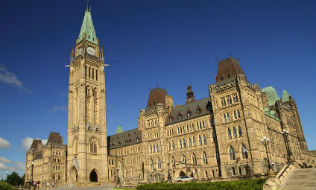

Pension arrangements for politicians have long been controversial, but at least in the case of members of Parliament, they’ve begun footing an equal share of the bill.
In fact, pension contribution rates by federal politicians have more than doubled in the last five years, according to the latest actuarial report on the pension plan for federal MPs.
At seven per cent in 2012, the rates have steadily increased, with the largest jump taking place last year when MP contributions rose to 15.79 per cent of their pay from 10 per cent in 2015.
As of this year, MPs and the government have begun sharing the current costs of the plan equally, according to the report. MPs are now contributing 19.48 per cent, a number the actuarial report projects will rise to 19.7 per cent in 2020.
Read: MPs and cabinet forced to reimburse pension overpayment
Unlike most pension plans, the fund doesn’t rely on investments. The only way the plan can boost its coffers, outside of the government and MP contributions, is through the interest the accounts pay themselves. In 2017, the effective quarterly rate is 0.47 per cent.
The fund includes two accounts: the members of Parliament retiring allowances account and the members of Parliament retirement compensation arrangements account. For 2016, the retiring allowances account had a shortfall of $39 million at a current value of $502.3 million. The retirement compensation arrangements account had an excess of $113.9 million at a value of $248.6 million. The two accounts must remain separate, so the funding status of one has no bearing on the other.
The pension benefit itself consists of three per cent of the highest average of annual earnings over any consecutive five-year period, times the number of years of service and up to a maximum of 75 per cent of average annual pensionable earnings. The pension is payable as of age 65, but retired MPs can claim a reduced amount as of 55.
